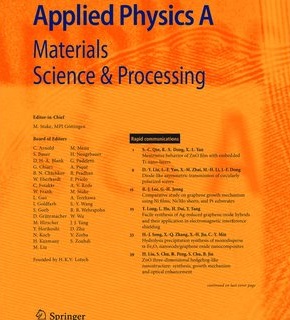Electrospinning-derived La2M′MnO6 (M′=Ni, Co, Fe) fibers for efficient photocatalytic and antibacterial applications
Abstract
The distinctive attributes of double perovskite oxides (DPOs) have drawn interest to meet the demands in a wide range of environmental and energy-related fields. This study reports the fabrication of La2M′MnO6 (M′=Ni, Co, Fe) double perovskite nanofibers via a polyvinylpyrrolidone (PVP)-assisted electrospinning method followed by calcination at 700 °C. SEM analysis confirmed the polymer burnout and the formation of interconnected fibrous networks. Raman spectroscopy and UV-Vis absorption analysis revealed vibrational features and narrow band gaps between 2.20 and 2.57 eV, favouring visible-light-driven photocatalysis. Photocatalytic studies showed that La2NiMnO6 (LNMO) fibers achieved 91% degradation efficiency for methyl orange (MO) and 94% degradation efficiency for crystal violet (CV) dyes under visible light in 180 min. Kinetic analysis confirmed pseudo-first-order reaction rates. Reusability tests over five consecutive cycles showed less than 20% reduction in efficiency, confirming the material’s long-term stability. Scavenger studies identified holes (h⁺) and superoxide radicals (O2⁻•) as the primary active species. Antibacterial testing demonstrated a zone of inhibition up to 11 mm for E. coli and 10 mm for S. aureus, with enhanced activity attributed to higher membrane permeability and reactive oxygen species (ROS) sensitivity in Gram-negative bacteria. These results position La2M′MnO6 fibers as robust, reusable materials for integrated water purification and antibacterial treatment.

 求助内容:
求助内容: 应助结果提醒方式:
应助结果提醒方式:


